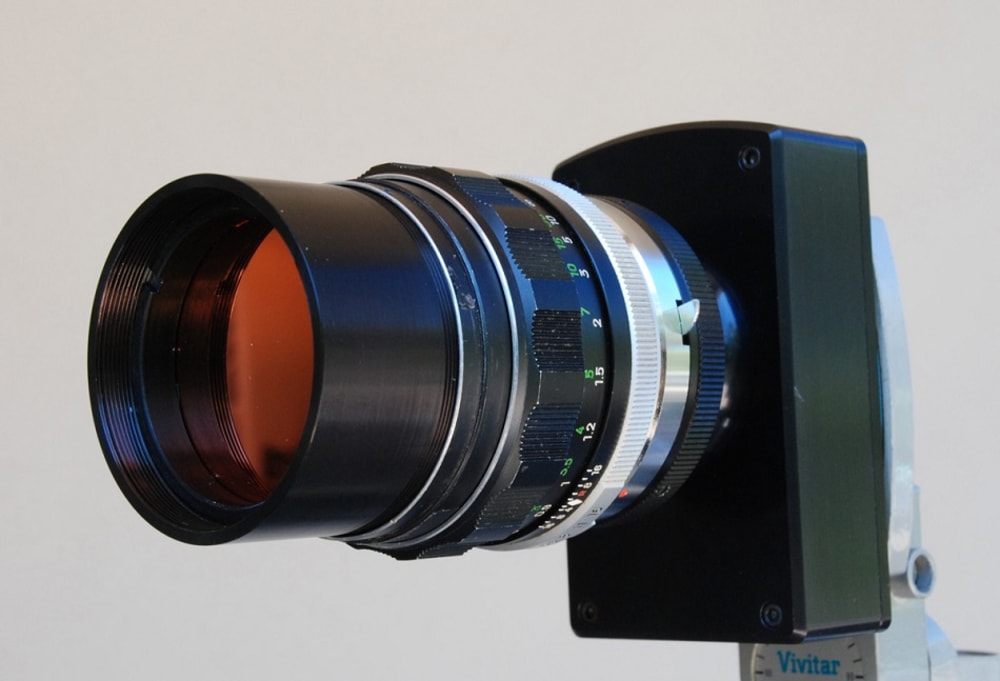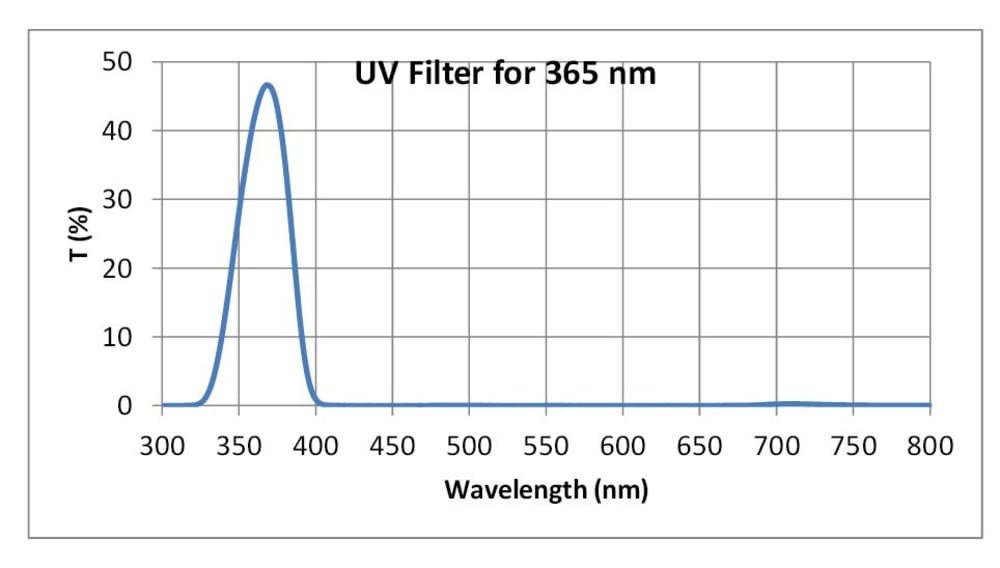
Our solar-blind filter permits direct imaging of the UV absorption and reflection characteristics from an object, and has many applications. Imaging at UV wavelengths is useful in atmospheric monitoring (SO2) and in secure communication. Scientific (astronomy) and military communication and detection applications in exo-atmosphere and underwater environments can be served. UV surveillance, monitoring, and data collection by UAV is made possible.
Isolation of a band of UV wavelengths shorter than ~400 nm from longer wavelength energy present in the background environment is a challenging problem. Digital CMOS and CCD array detectors respond to the undesired long wavelength energy with many times higher sensitivity to energy in the UV region below ~400 nm. Insufficient rejection of long wavelength energy dilutes and often obscures the desired UV signal. The traditional solution is to use expensive complicated filters that are generally composed of many individual elements that are required in combination to provide high levels of out-of-band rejection at various parts of the long wavelength spectral range. Additional solutions require special focal plane sensors that have reduced long wave response; such sensors are very expensive. Our camera system uses common monochrome arrays coupled with our less expensive UV filters. Economics limits currently available filter sizes to ~50 mm diameter and thereby restricts the use of existing filters to common optics having comparable apertures.
Our solar-blind imager is based on novel filter designs that provide efficient UV bandpasses while rejecting wavelengths between 400 nm to ~1200 nm to levels varying from 10^5 to 10^8. The integrated system response will depend on the sensor response: and can level exceed 10^9. With our new process, filters that are environmentally stability to MIL and NASA Standards can be fabricated in sizes up to 130 mm. The fabrication process uses thin-film to produce a transmission band in the UV while reflecting and absorbing non-UV energy. Since many are fabricated in one process run, the cost of an individual filter is lower than for currently available UV filters. The cost of a UV camera system is thereby reduced.
-
Awards
-
 2013 Top 100 Entries
2013 Top 100 Entries
Like this entry?
-
About the Entrant
- Name:Samuel Pellicori
- Type of entry:teamTeam members:Frank Calcagni of Optical Filter Source
- Patent status:none





